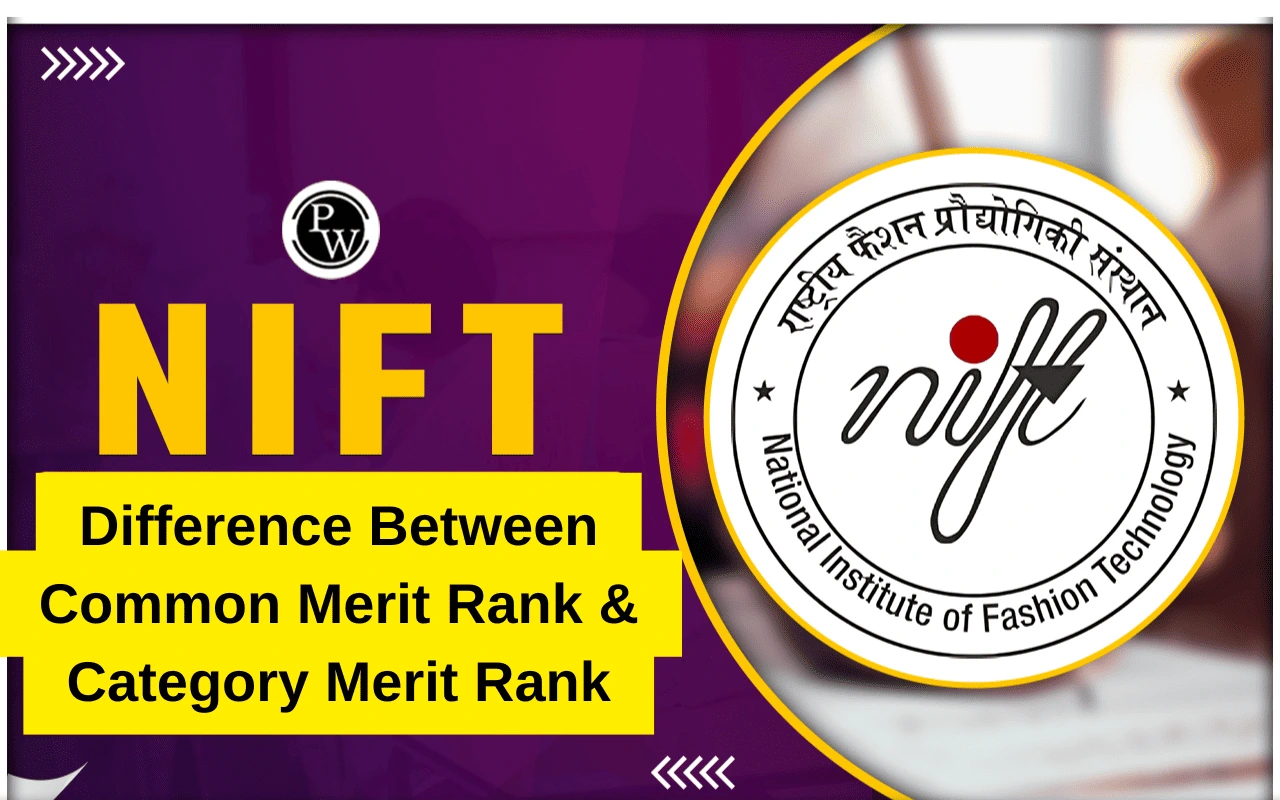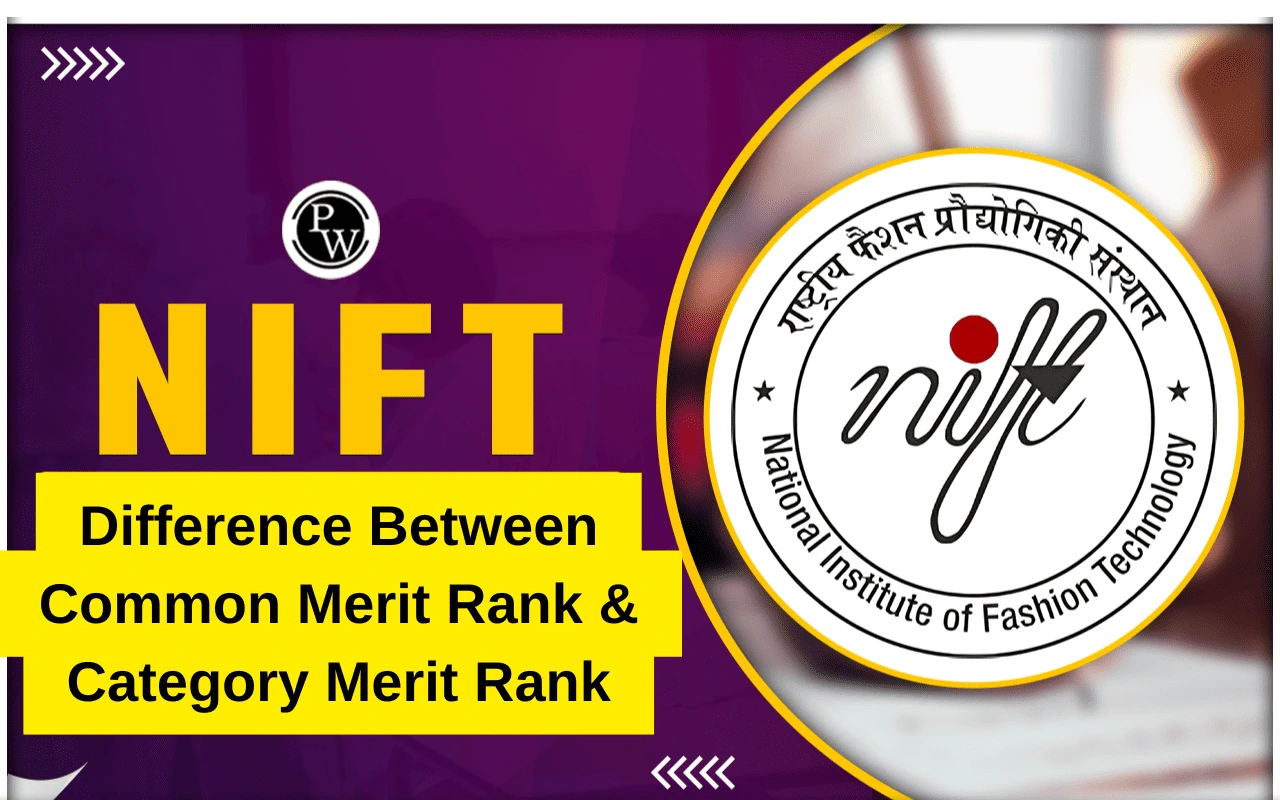

Difference Between Common Merit Rank & Category Merit Rank: In NIFT admissions, the Common Merit Rank (CMR) is a type of rank list prepared based on the candidate’s overall position among all test-takers, regardless of category, and is used to determine general eligibility for various undergraduate and postgraduate programs. According to previous years’ data, candidates having CMR between 1 to 9713 were considered for NIFT counselling for admission to BDes courses. The NIFT cutoff includes the opening and closing merit rank of all categories for BDes admission. While Category Merit Rank (CMR) mentions the candidates’ rank within a specific reservation category-such as OBC, SC, or ST.
What is Common Merit Rank (CMR) in NIFT Admissions?
The Common Merit Rank (CMR) in NIFT admissions is an all-India rank assigned to candidates based solely on their performance in the NIFT entrance exam, without considering any reservation category. This rank list includes all candidates-general as well as those from reserved categories-and reflects their overall standing among all test-takers nationwide.
It is used for seat allocation in the unreserved or general category. Candidates with higher CMRs have better chances of securing their preferred courses and campuses during counselling.
What is Category Merit Rank (CMR) in NIFT Admissions?
The Category Merit Rank (CMR) in NIFT admissions refers to a candidate’s position within their specific reservation category, such as OBC, SC, or ST, based on their performance in the entrance exam. This rank determines the order in which candidates from each category are considered for admission during counselling. The Category Merit Rank focuses on comparing candidates within the same reservation group. Candidates with higher category ranks have a better chance of securing their preferred course and campus under the reserved quota.
Difference between Common Merit Rank & Category Merit Rank
The following are key differences between Common Merit Rank & Category Merit Rank.
NIFT Reservation 2025
The NIFT Reservation 2025 policy applies to both its undergraduate and postgraduate programmes. Based on government norms, seats are allocated to different categories. Seats are reserved for SC, ST, OBC (Non-creamy layer), GEN-EWS, and Persons with Disability (PWD), along with provisions for state domicile and foreign national candidates. Candidates must declare their category during the application process and provide valid certificates at the time of admission.
During seat allotment, candidates are considered for admission based on their position in the category merit list and the number of reserved seats available for that category. The following table mentions the reservation of seats for NIFT admissions 2025.
Difference Between Common Merit Rank & Category Merit Rank FAQs
What is the Common Merit Rank (CMR) in NIFT admissions?
The Common Merit Rank (CMR) is an all-India rank assigned to candidates based on their performance in the NIFT entrance exam, regardless of their category. It represents the overall position of a candidate among all test-takers.
What is the Category Merit Rank in NIFT admissions?
Category Merit Rank refers to a candidate’s rank within their specific reservation category-such as OBC, SC, ST, or EWS. It shows where a candidate stands among others in the same category.
Which rank is used for seat allotment in NIFT counselling?
Both ranks are important, but seat allotment for reserved categories is primarily based on Category Merit Rank, while unreserved (general) seats are allotted based on the Common Merit Rank.
Can a reserved category candidate get admission through CMR?
Yes, if a reserved category candidate’s CMR is high enough, they can secure a seat in the general category. Otherwise, they are considered for seats within their category based on their Category Merit Rank.
What factors influence the cutoffs for CMR and Category Merit Rank?
Cutoffs for CMR and Category Merit Rank depend on the number of applicants, difficulty level of the exam, seat availability, and the performance distribution of candidates in each category.













